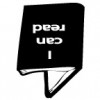
At a rudimentary level, a child needs to know how to hold a book and where to start reading. A child must track words left to right and then continue from the end of one line to the beginning of the next line (return sweep).
While print concepts are obvious to adults, they are not always for a child. However, a child can easily grasp this concept when they read every day. Let your child hold the book and show him where the story starts and ends. Let your daughter turn the pages and trace the sentences with her finger as you read.
Print Concepts
Read Between the Lions offered an entertaining way to determine if your child has grasped this concept. They recommend playing “Silly Reader” which requires you to intentionally do everything wrong – how fun!
They offer the following advice:
- Hold the book upside down and ask questions. Is this the correct way to hold a book? How do you hold a book?
- Using your finger to trace the sentences, read right to left and then ask questions. Is that backwards? How do I read the lines?
- Read the illustrations instead of the words and then ask questions. Should I be reading the pictures or do I read the words?
- Starting at the back of the book, with the last word begin reading backwards and then ask more questions.
They conclude with some great advice – do whatever task provides entertainment for your child while enforcing the correct way to read a book!
To help a child grasp the concept of words, clapping in between words is a great exercise. While reading a board book, have your child clap for each word in a sentence. If your child is interested, show them how each word in a sentence is separated by white space and carries its own meaning.
Another more direct approach that develops a child’s concept about print, is to give your child the following directions:
- Show me the cover (front) of the book.
- Show me the back of the book.
- Point to where I start to read.
- Show me which direction I should read (left to right).
- Point to a word.
- Point to a letter.
- Point to each word as I read it.
Print Awareness
Print awareness is necessary in order for a child to grasp print concepts. In addition, it is an important step in learning to read. Print awareness refers to
- Understanding that print carries a meaning and
- Distinguishing print from pictures and other images.
Print-Rich Environment
Filling a home or classroom with books, magazines, signs and labels (anything that has words on it) encourages the development of both print concepts and awareness. The following are examples of affordable activities.
- Visit local library or used book store,
- Create labels in your home, e.g., child’s toy bins,
- Write your child’s name on as many things as possible, e.g., inside jackets,
- Point out print features in your environment, e.g., street signs, and
- Let your child observe you read, e.g., show her the directions as you make cupcakes.
Learning to read is a lengthy process and each child progresses differently. Reading to your child every day for at least 20 minutes is a great habit to form. Keeping it fun will ensure enjoyment for all and promote a love of reading.
Source: Rath, L.K., Ed.D & Kennedy, L. (2004). The Between the Lions Book for Parents. New York, NY: Harper Collins.

I love your site.